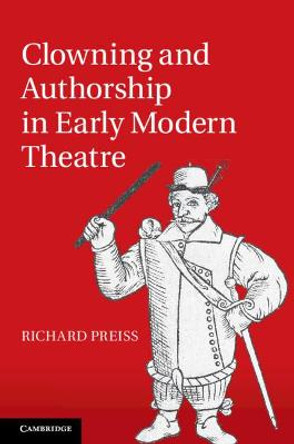What work did physically disabled characters do for the early modern theatre? Through a consideration of a range of plays, including
Doctor Faustus and
Richard III, Genevieve Love argues that the figure of the physically disabled prosthetic body in early modern English theatre mediates a set of related 'likeness problems' that structure the theatrical, textual, and critical lives of the plays of Shakespeare and his contemporaries. The figure of disability stands for the relationship between actor and character: prosthetic disabled characters with names such as Cripple and Stump capture the simultaneous presence of the fictional and the material, embodied world of the theatre. When the figure of the disabled body exits the stage, it also mediates a second problem of likeness, between plays in their performed and textual forms. While supposedly imperfect textual versions of plays have been characterized as 'lame', the dynamic movement of prosthetic disabled characters in the theatre expands the figural role which disability performs in the relationship between plays on the stage and on the page.
Early Modern Theatre and the Figure of Disability reveals how attention to physical disability enriches our understanding of early modern ideas about how theatre works, while illuminating in turn how theatre offers a reframing of disability as metaphor.
A critical analysis of key early modern plays including The Fair Maid of the Exchange, A Larum for London, Doctor Faustus and Richard III, revealing how physical disability operates as a figure for both theatrical personation and textual dramatic forms.About the AuthorGenevieve Love is Associate Professor of English at Colorado College, USA. Her work has appeared in journals including
Renaissance Drama,
Upstart,
Shakespeare Bulletin, and
Literature Compass, and in essay collections including
Richard II: New Critical Essays, edited by Jeremy Lopez (2012) and
Christopher Marlowe, Repertorial Commerce, and the Book Trade, edited by Roslyn Knutson and Kirk Melnikoff (2018).
ReviewsThis monograph is important both for performance studies scholars and for literary historians of disability. * Theatre Journal *
Love promotes the "figure of disability" as
the key figure for the ways that early modern theatre imagined itself, a figuration of and for figuration - this book is a stunner from the very first word to the final full stop. -- Professor Paul Menzer, Mary Baldwin University, USA
Book InformationISBN 9781350160361
Author Genevieve LoveFormat Paperback
Page Count 224
Imprint The Arden ShakespearePublisher Bloomsbury Publishing PLC
Weight(grams) 248g







